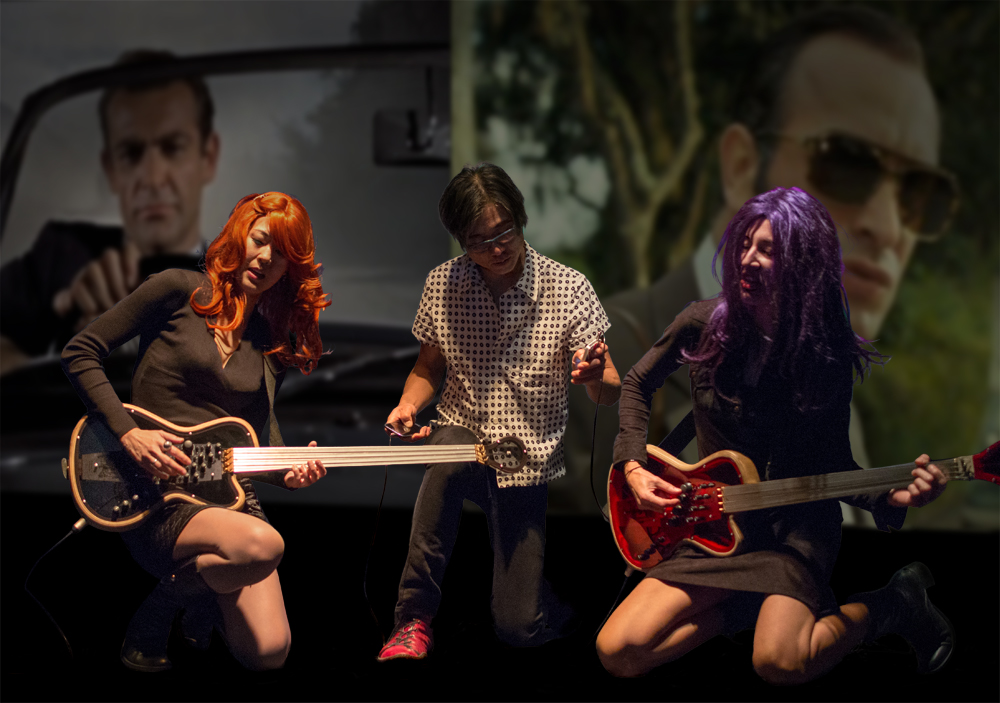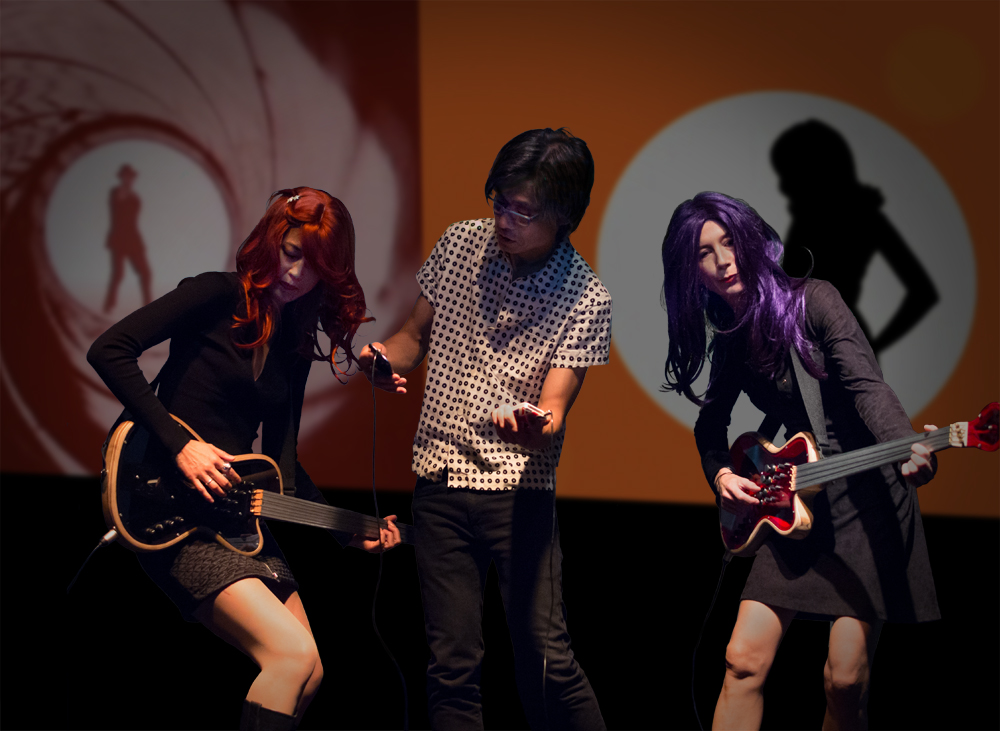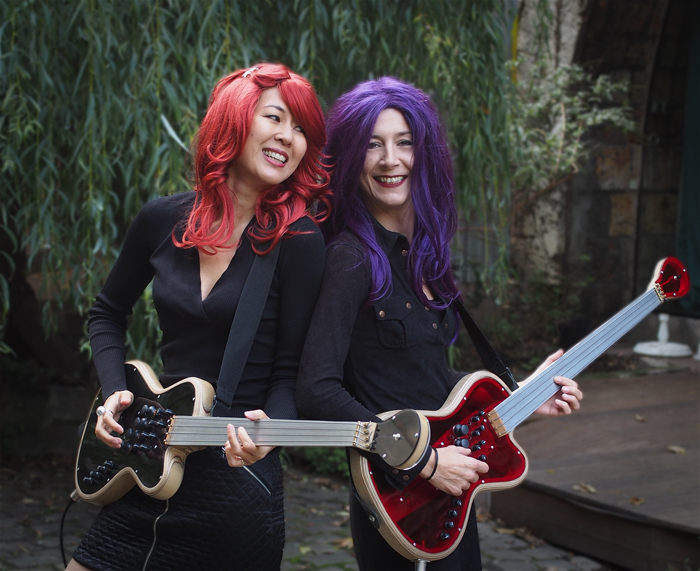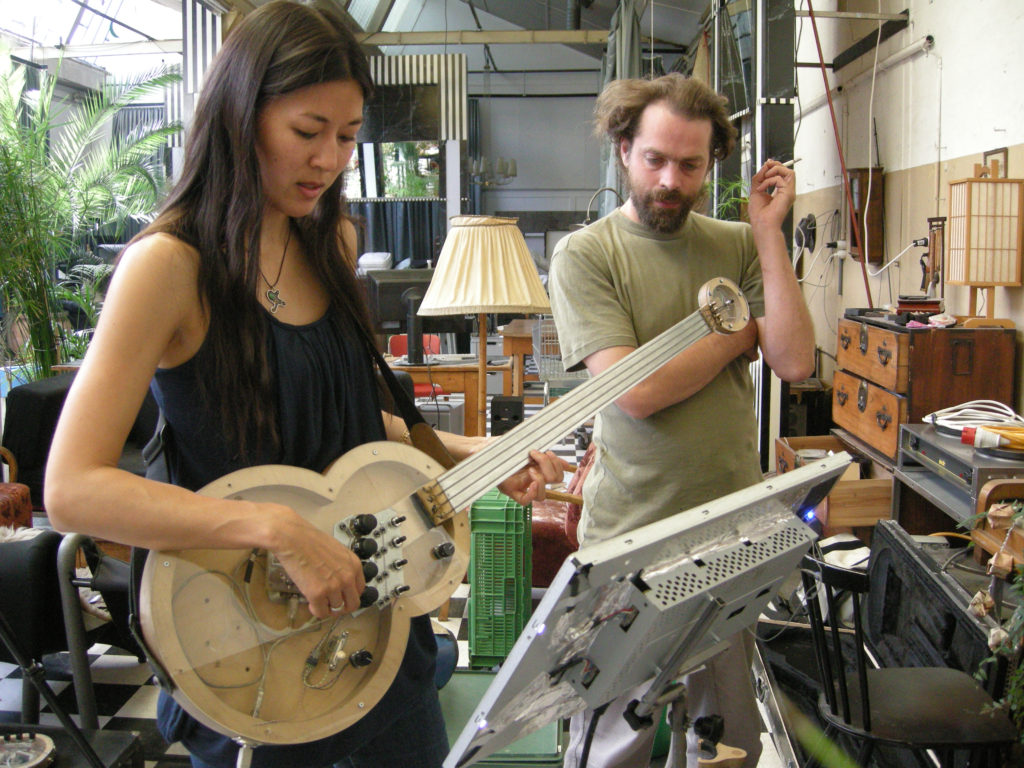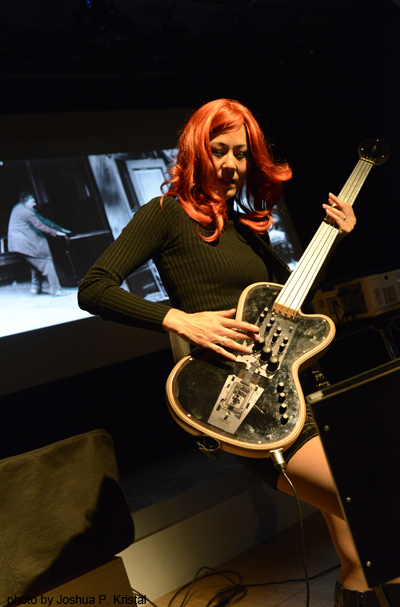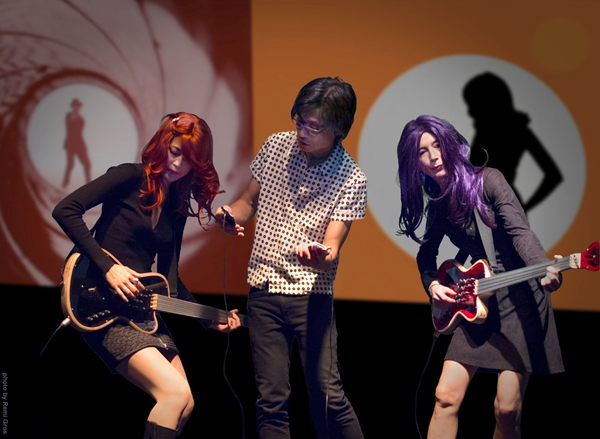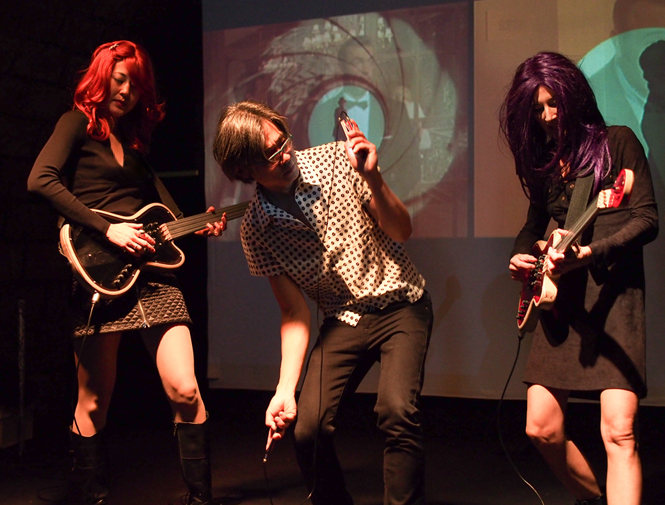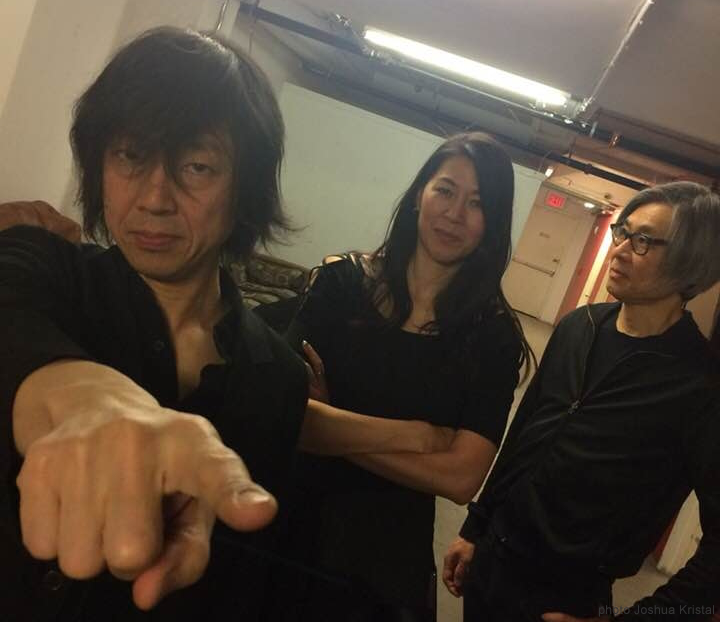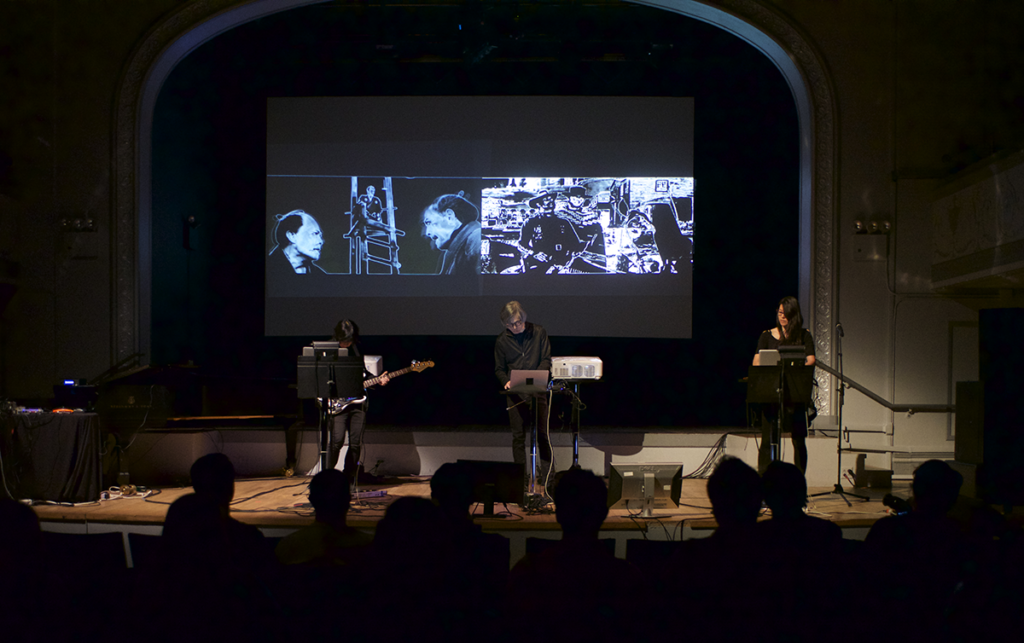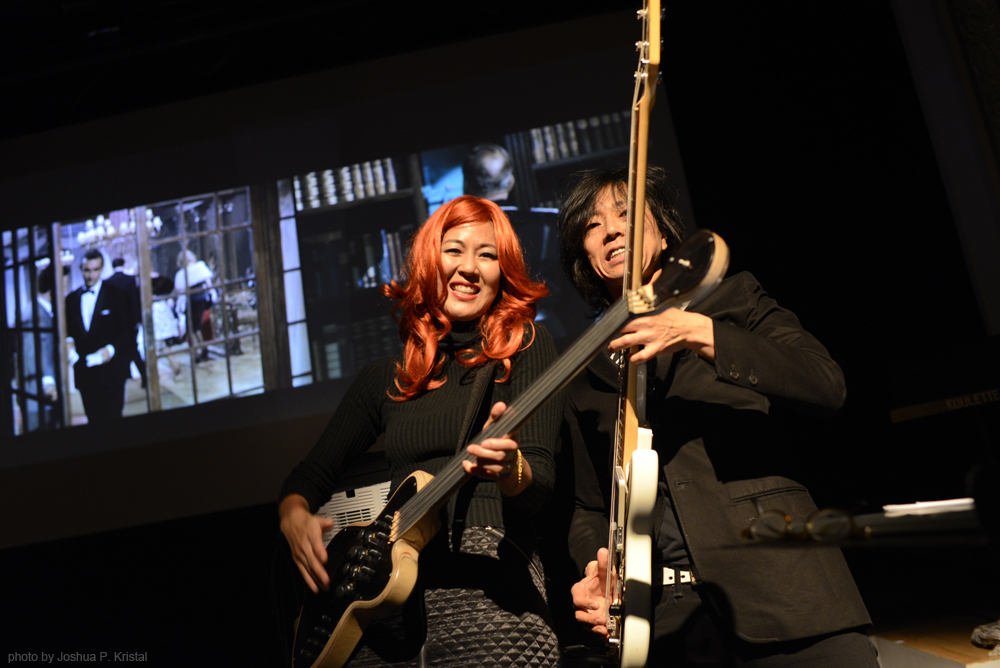Chasers 2012-present
Videobass A/V band
Director/Videobass: Angie Eng
additional performers: Atau Tanka, Akio Mokuno, Cécile Lacombe(Videobass),Maria Chavez (music)
See article (in french) by Jocelyn Quélo
The writer can only imitate a gesture forever anterior, never original; his only power is to combine the different kinds of writing, to oppose some by others, so as never to sustain himself by just one of them; if he wants to express himself, at least he should know that the internal ‘thing’ he claims to ‘translate’ is itself only a readymade dictionary whose words can be explained (defined) only by other words, and so on ad infinitum’. (Barthes in ‘Death of the Author’)
All stories have been told. Today we are arrangers. We recycle, appropriate, and re-contextualize preceding narratives. Chasers follow the trajectory of art movements of the last century that contributes to a renaissance of the non-singular Author and back to the communal story: The Cubists with Picasso’s newspaper clipping paintings, the Dadaists ‘cut-ups’, the Surrealists ‘ready-mades’ and today’s mixologist sampling masters who borrow and open-source their interpretations. The film performance Chasers examines cinematic storytelling using variations of the collective group. Its members are not the artists/performers themselves, but all moviemakers and their viewers. The artists are digital marionettes whose strings are attached to visual and audio symbols that trigger cultural memories. The arrangers or composers remix films as citations, homages, or mirrors. But Chasers is not just jogging our memories of stories retold. Chasers adopt a sampling technique of visual rhythms and soundscapes to seduce the audience to experience cinema beyond their narrative goals.
Unlike appropriation or re-contextualization art which makes anew of pre-existing source material, Chasers is about simuli of moving images’ influence upon one another. Films from different countries are selected based upon genre, scenario, or a remake. They are positioned as doubles, side by side (i.e. Kurasawa’s Seven Samurai and John Sturge’s Magnificent Seven who’s latter producer bought the rights to the former 6 years after its release.) Eng analyzes how different cultures interpret the same story according to their respective countries. In the case of Charlie Chaplin, whose character is the story, we get to see and compare his alter ego and inspiration, Max Linder. In another pair with spy heroes, James Bond AKA 007 and Hubert Bonisseur de La Bath AKA 0SS-117 one is not sure which is the template of the other. Jean Bruce (b.1921) a prolific euro-spy novelist and his American peer, Ian Fleming (b. 1908) were brought to the silver screen roughly at the same period. 0SS -117 Rio ne repond plus is a parody of euro spy films of the ’50s and ’60s which are either inspiration for or from the American James Bond films. Their latest, presented at Roulette in 2018 compared Kurasawa’s Yojimbo and its spaghetti western remake by Sergio Leone’s Per un pugno di dollari or Fistful of Dollars.
In 2009 Eng contacted Swiss engineer/ artist Michael Egger who makes custom video instruments. Since 2003 Michael has been developing a computerized video instrument that he named the Videobass. Like myself and many live video artists, he wanted to play images as one plays music.
At its internal core lies a USB sensor box he calls the GNUSB. The instrument runs with Max/Jitter on a mini-Mac hidden underneath foam in an SKB case that also houses a collapsible screen. Sliding my fingers along the chord against a sensor strip allows me to select a clip and launch it via Playstation knobs. Various other buttons allow digital effects such as brightness, color, lumakey, scrubbing through a clip, and capturing a live camera feed.
(Currently, the Videobass is only a visual controller and does control/play audio.)
More information on the Videobass see Michael Egger’s website.


